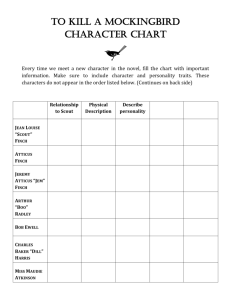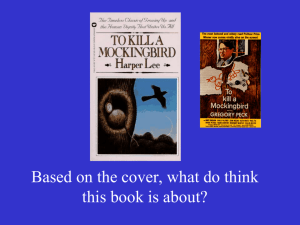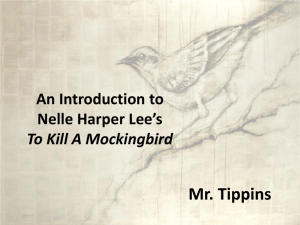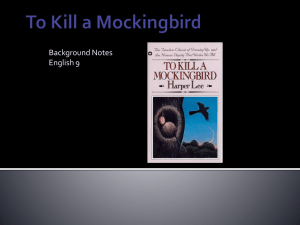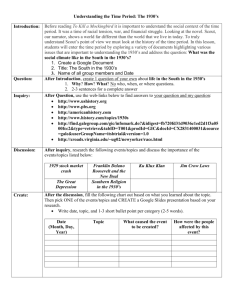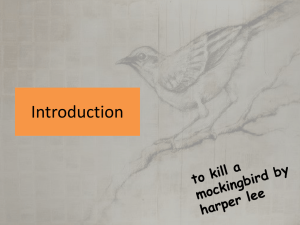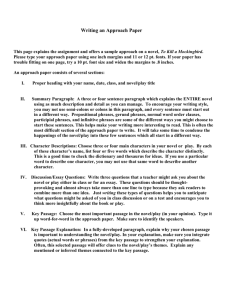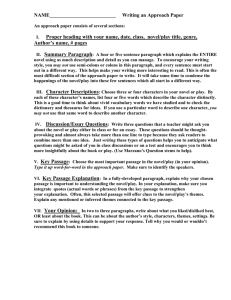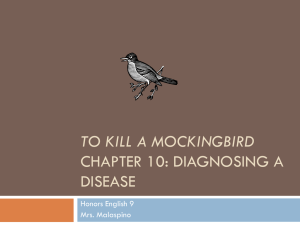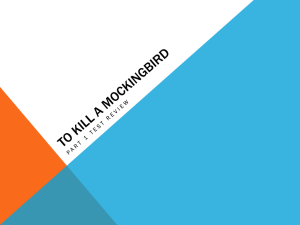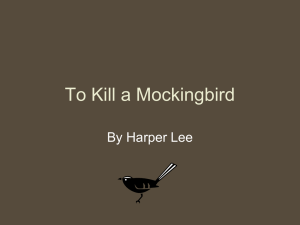To Kill a Mockingbird Notes Power Point
advertisement
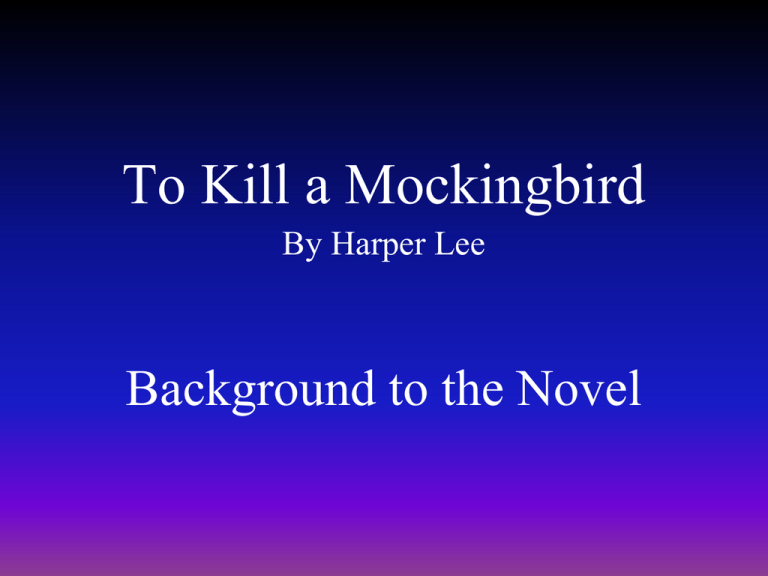
To Kill a Mockingbird By Harper Lee Background to the Novel SETTING OF THE NOVEL • Alabama • 1930’s – – – – Great Depression Prejudice Legal segregation Ignorance America in the 1930s • WWI was over – WWII had not yet started • Stock market crashed in 1929 • Franklin D. Roosevelt becomes President in October 1932 1930’s - Great Depression • Stock Market Crash – October 1929 • Businesses failed and factories closed – People were out of work – Even people with money suffered because nothing was being produced for sale. • Poor people lost their homes, were forced to “live off the land.” Statistics Population: 123,188,000 in 48 states Life Expectancy: Male, 58.1; Female, 61.6 Average salary: $1,368 Unemployment rises to 25% Food Prices: • Milk – 14 cents a quart • Bread – 9 cents a loaf • Round Steak – 42 cents a pound Prices in 1930 • $100 Converted from 1930 to 2005 it would be equivalent to $1204 • Average new house – $7,145.00 • Average income per year – $1,970.00 • Gallon of gas –10 cents • Average new car – $640.00 Fashion Jim Crow Laws • Slavery ended in 1864 but racial prejudice was alive and well • Jim Crow Laws referred to the legal separation of races • Blacks were not protected from discrimination by individuals or private companies Racial separation (segregation) Gender Bias (Prejudice) • Women were considered “weak” • Women were generally not educated for occupations outside the home • In wealthy families, women were expected to oversee the servants and entertain guests • Men not considered capable of nurturing children Social Hierarchy in Alabama 1. 2. 3. 4. 5. Aristocrats - White upper class White middle class White lower class White trash Blacks Aristocrats -White upper class • Educated • Legitimate claim to “Old South” plantation families. • Real Wealth White middle Class • White • Some education • Property owners • White Lower Class • White • Little or no education • Sharecroppers/ Farmers Poor White Trash Refused education Often alcoholic Few or no work skills Often had poor work ethic Had the same opportunities as other white classes Blacks • Lowest on the social hierarchy • Formal public education was prohibited • Placed in lowest social class only because of race Legal Issues of the 1930’s • Women given the vote in 1920 • Juries were MALE and WHITE • “Fair trial” did not include acceptance of a black man’s word against a white man’s TO KILL A MOCKINBIRD Prejudice Race Gender Handicaps Rich/Poor Age Religion ~ Characters ~ ▪ ▪ ▪ ▪ ▪ ▪ ▪ ▪ ▪ ▪ Atticus Finch Jeremey Atticus “Jem” Finch Jean Louise “Scout” Finch Tom Robinson Arthur “Boo” Radley Miss Maudie Atkinson Charles Baker “Dill” Harris Calpurnia Aunt Alexandra Mayella Ewell Point of View • First person – Story is told by Scout, a 10-year-old girl – Harper Lee is actually a woman; Scout represents the author as a little girl although the story is not strictly autobiographical Reading the Novel • Setting is all important –be aware of the “where” and “when” as you begin • Point of View – the novel is shaped by the voice of a young girl who sees the story from a position of naïve acceptance • “Goodness vs. Ignorance (Evil)” is an important theme “If you can learn a simple trick, Scout, you’ll get along a lot better with all kinds of folks. You never really understand a person until you consider things from his point of view—until you crawl into his skin and walk around in it.” – Atticus Finch
